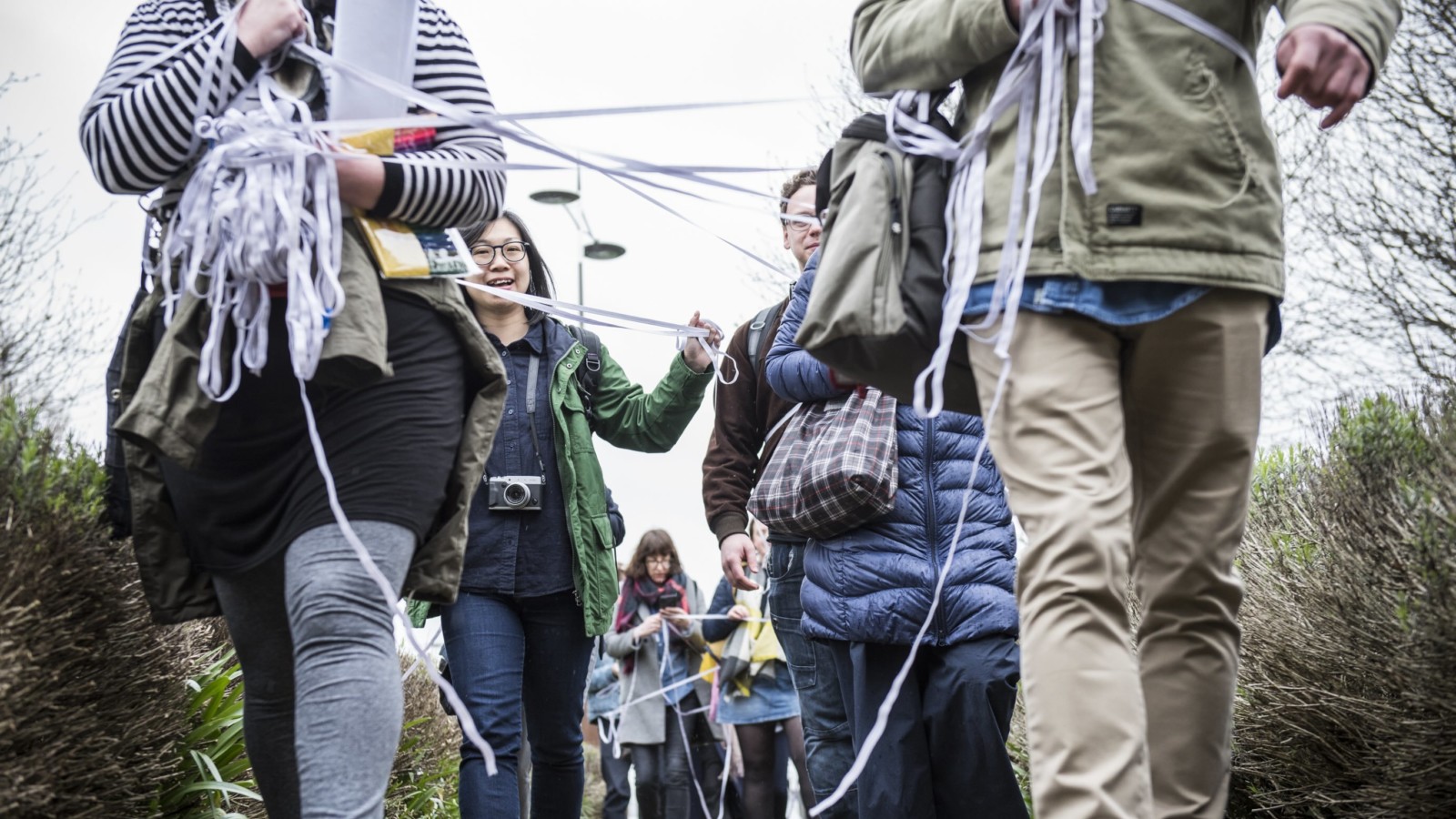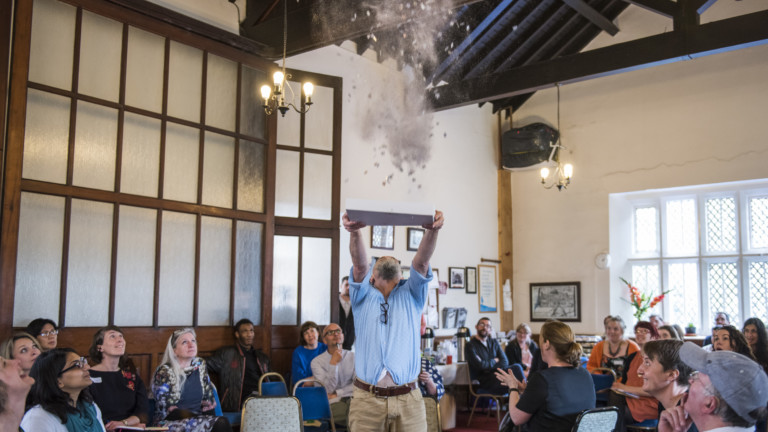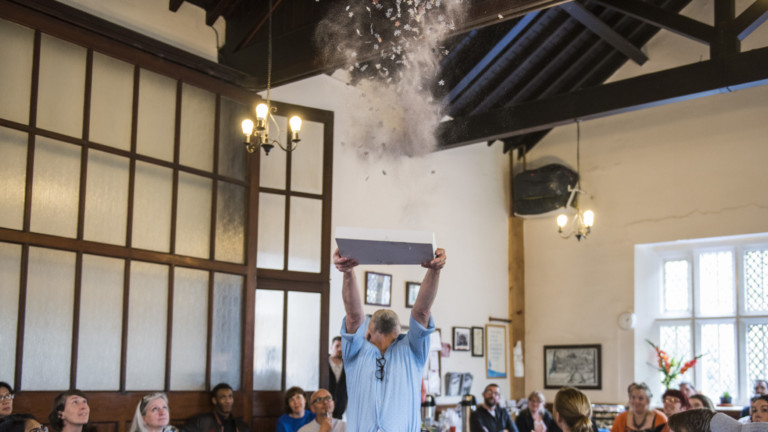Imagining socially engaged practice as an ecosystem is a useful way of understanding the checks and balances, the pressures and strains of working within this field.
There is a fine and precarious relationship between each element within this ecosystem, and each must be cared for, nourished and sustained to ensure the sensitivities of all participating are championed.
The Artist Professional Development workshop series at Heart of Glass became an important part of this ecosystem, a means of establishing contact, acknowledgment and sharing, as well as giving attendees crucial access to professionals and experts in the field of socially engaged practice. The creation of this space, where anxieties and concerns could be worked through in a holistic and encouraging way, is sadly still very much lacking within the UK. Maintaining these delicate ecosystems is no easy task, and guidance, support and affirmation should be a frequent and important part of the career of every socially engaged practitioner – regardless of what context they are working in.
Now, many of these artists may not even see themselves as socially engaged creatives. The field is so expansive that it’s often difficult to put a finger on what a socially engaged practitioner actually looks like. The workshops helped to unpick some of the ideologies, philosophies and contemporary developments in the field, giving greater clarity to what a successful socially engaged practitioner could look like. This included providing clarity and guidance on more technical concerns, such as funding and contracts; both vital aspects of working in this field, but also some of the most daunting tasks due to the lack of access to expert advice.
The lack of infrastructure and support in the UK means that these issues are usually faced by socially engaged artists only when they’re right there, staring them in the face.They have to think on their feet, often with nobody to turn to within their own organisations or networks who has that experience and expertise. This is especially true given the unique and complex needs and desires of each individual and each community that a socially engaged artist engages with. Having these professional and shared knowledges will certainly prepare the participants for when these challenges become apparent, and they will be able to confront them with agency and confidence.
The current political climate in the UK is also spawning new pressures on socially engaged practitioners. As austerity continues to drain public and social services, the role that socially engaged artists are needing to fill is expanding and becoming more and more challenging, especially in locations where political rhetoric has sewn division. Although the loss of permanent, government-funded community spaces can never be replaced, the creation of temporary spaces can provide a refreshing and radical fluidity for communities to collectively re-organise and re-imagine – and socially engaged artists play a key part in this work.
The aforementioned pressures have meant that artists working with communities are now having to be at once activists, advocators, curators, educators and fundraisers – and this is not always conducive to the success of community-based projects.
This role can become too fluid and too expansive, something which Stephen Pritchard warns of in his 2018 text Caught Doing Social Work (presented for Manifesta 12 in Palermo, Italy). This becomes the case especially when artists become instrumentalised by corporations, who sometimes push artists to go above and beyond their duty. The final workshop with artist Shaun C. Badham addressed this issue. While it’s important to recognise your own strengths, it’s also crucial to be self-aware, and to understand when you need to step back and pass responsibility on to others with more expertise and experience.
The scope of the workshops was certainly UK-wide (as was evident in the array of participants, who travelled from across the UK), but by focusing on the arts in the North-West, the workshops became a refreshing antidote to the usual focus on London. The workshops certainly highlighted the versatility and strength of the arts in the North-West, and the array of artistic activity here is an excellent model for areas of the UK which experience under-investment and a low level of engagement with the arts. The workshops had the ability and the space to appeal to artists working in an array of contexts and geographies, whether urban or rural, solo or collective, funded or voluntary.
A key commonality between all the participants was a recognition that these forums for discussion are really crucial, but still all too rare.
Although workshops and forums for socially engaged practitioners do exist in the UK, they are few and far between, and are often one-off events with a limited ability to create a legacy or a support network. The Socially Engaged Art Salon (SEAS) in Brighton has created a space for such conversations to happen, as well as an inclusive programme that focuses on the desires of the local community. In the North-West, The University of Salford’s MA in Socially Engaged Arts Practice (with Community Experience) is an exciting development in the field, providing an academic rigour and the opportunity to provide much needed resources in the region.
Unfortunately, socially engaged practice as a methodology is still barely visible in British arts education, let alone encouraged. When it is, art students are taught to privilege their own outcomes and trajectories as more important than of the desires and needs of the communities they collaborate or work with. Curriculums in British art education are devoid of concerns around ethics, power dynamics and exclusion, discouraging capable students from undertaking socially engaged work. It is perhaps then not surprising then that such little infrastructure exists for socially engaged practitioners. Arts institutions and elite universities themselves are renowned for being shockingly distant from their local communities – this was very apparent in the aftermath of the 2018 fire at The Glasgow School of Art (GSA), where the local community were left in the dark for weeks with no dialogue from GSA.
Taking part in the workshops, I felt the most interesting conversations revolved around the philosophies and ideologies behind socially engaged practice – particularly around the role of the artist, and how to remove the hierarchies that can dominate socially engaged projects. The term facilitator is becoming increasingly prevalent as a way of democratising practice, as it suggests that an artist is drawing on pre-existing strengths within a community to facilitate change, rather than being the sole, original creator. By becoming participants themselves, the hierarchy that seeps into so many of these projects can be disrupted and dismantled. This ideology was very much at the core of community arts projects in 1970’s Britain, such as Jubilee Arts who were based in and around Birmingham.
The legacy of collectives such as Jubilee Arts can be seen in the work of design collective Assemble who became known for their work with the Granby Four Streets neighbourhood in Liverpool. Their 2016 Turner Prize win was a pivotal moment for socially engaged practice in the UK, giving these community-based practices visibility and agency. Despite the different contexts in which Jubilee Arts and Assemble worked, there is a shared acknowledgment and drive to work as an ally to communities, and a desire to push back against potential instrumentation by corporations. The ambiguity of the artists within Assemble, and their role as facilitators and co-producers allowed them to eliminate hierarchies and distance surrounding artist and participant.
Harvey Dimond (b.1997) is a British-Barbadian artist, programmer and writer based in Glasgow, UK. Their work seeks to imagine Black queer futures in Scotland through a studio based practice, exhibition making and community projects.


